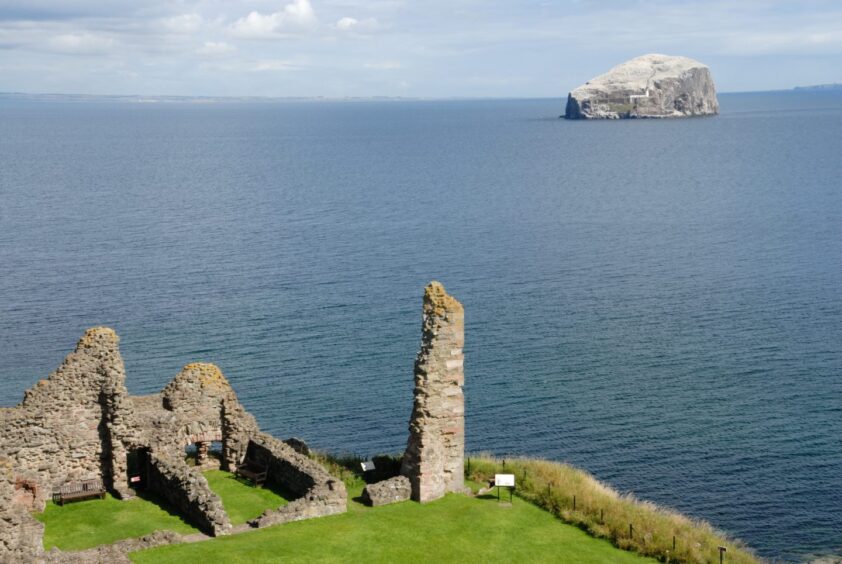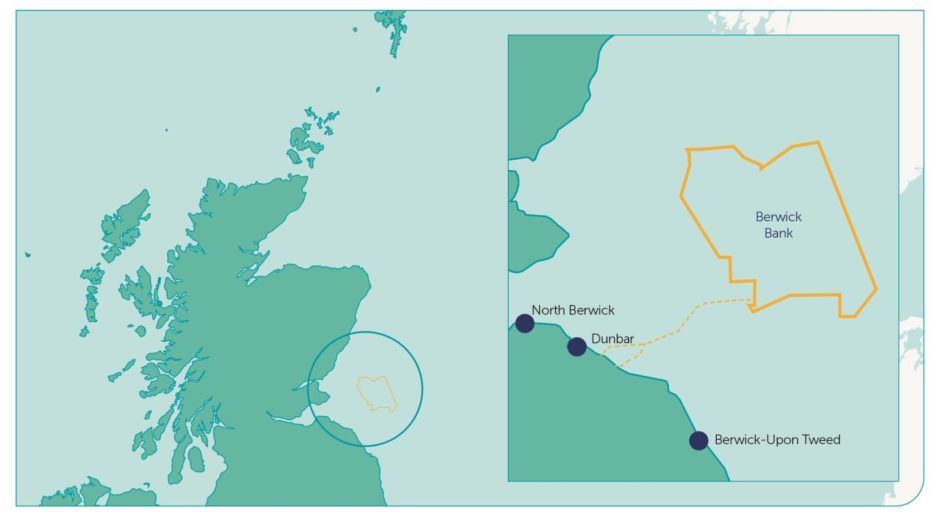
East Lothian Council has granted planning permission in principle to onshore infrastructure necessary for SSE Renewables’ Berwick Bank wind farm, taking the mammoth project one step closer to reality.
SSE confirmed on Wednesday that the local authority had given consent to its plans to build transmission infrastructure and a new substation at Branxton, south of Dunbar in East Lothian.
Sited in the outer Firth of Forth, the titanic site has the potential to deliver up to 4.1 gigawatts of installed capacity if fully consented. The project arose through the combination of two other SSE Renewables offshore wind projects, Berwick Bank and Marr Bank.
A second export cable would make landfall near the Blyth area of Northumberland.
Billed as one of the largest offshore opportunities in the world currently under development, its backers say a fully powered Berwick Bank would increase Scotland’s total renewable energy capacity by nearly 30%.
SSE said this week’s council decision marked “a major milestone” for the project as its first official planning consent to be granted.
It now intends to follow up the approval in principle with a detailed design planning application to East Lothian Council “in due course.”
Potential bids for AR6
In late 2022, a wider planning application – the largest wind planning application to be submitted in the UK – was lodged with the Scottish Government in which the developer seeks consent to develop and enter construction. SSE said it is now hopeful of receiving a final determination from Scottish Government ministers “early in the new year.”
Should that occur in a timely manner, it could pave the way for the project to be entered into the next round of the UK’s renewable energy auctions, Allocation Round 6 (AR6), which will be held next summer.
SSE Renewables is targeting a final investment decision on the project in 2025, subject to receiving a timely consent and offtake contract.
It has also promised a “multi-billion-pound investment boost” to the Scottish and UK supply chain firms as a result of any approval.
Economic impact studies suggest that at peak construction in 2026, the project could create around 4,650 direct, indirect and induced jobs in Scotland, and 9,300 in the UK – adding an estimated £8.3 billion to the UK economy as a whole over the lifetime of the project.
SSE Renewables Berwick Bank project director, Alex Meredith, commented: “We welcome this planning consent from East Lothian Council which comes at a crucial time with COP28 currently underway, reflecting our collective commitment to tackling the climate emergency.
“The onshore grid network is an immensely important part of the project; simply put, without this element, the project could not continue.
“With consent now granted from East Lothian Council for planning permission in principle, we can progress to a detailed design which will allow us to build the infrastructure required to support the conversion of clean, green energy into the national grid.”
Should central planning approvals come through, Mr Meredith said the developer would then move “very quickly” into the next CfD auction and move forward with a final investment decision and construction.
There are yet other hurdles to face however, with planning objections lodged with Marine Scotland by the North Berwick-based Scottish Seabird Centre, as well as National Trust for Scotland, RSPB Scotland and Members of the Scottish Environment Link Marine Task Force over the development’s potential environmental impact.
The firm also caused a stir earlier this year after its environmental submissions discussed limiting a 400-year-old traditional bird hunt in the Outer Hebrides to mitigate any potential harms to gannets as a result of the wind farm.
However, SSE notes that an independent survey of East Lothian locals showed over 70% of respondents expressed support for the scheme.
Recommended for you

 © Supplied by SSE Renewables
© Supplied by SSE Renewables